Understanding the Basics of Ketone Physiology and its Impact on Weight Loss
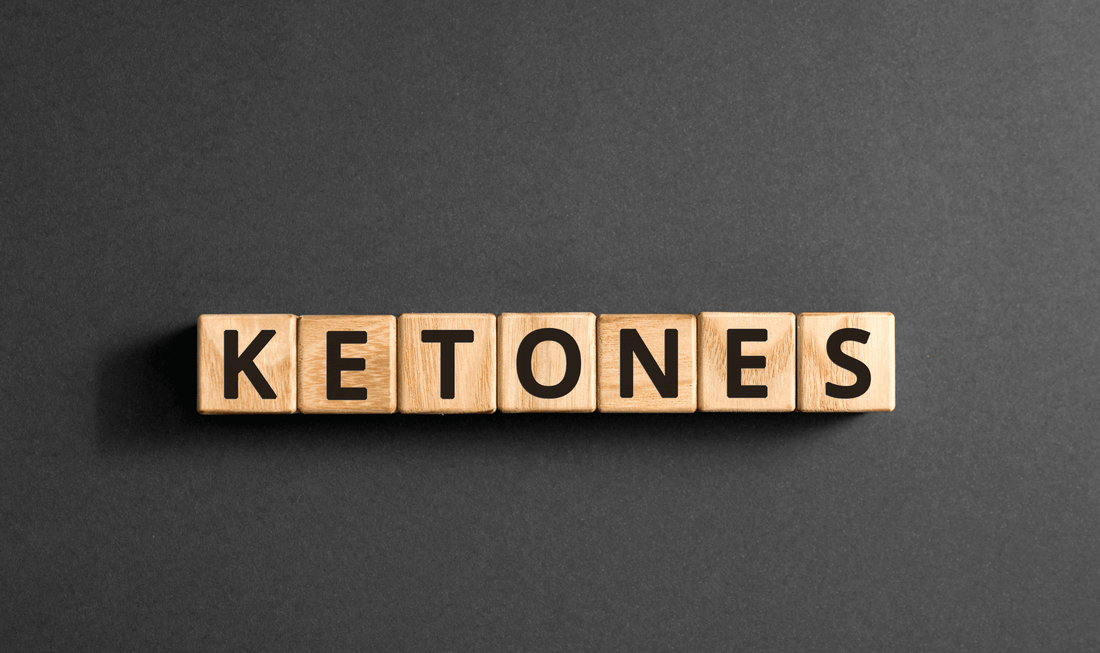
The ketogenic diet has gained popularity as a low-carbohydrate, high-fat diet that promotes weight loss and various health benefits. Following a ketogenic diet, the body enters a metabolic state called ketosis, which relies on ketones as a primary energy source instead of glucose. In this blog post, we will explore the basic physiology of ketones and how they impact weight loss.
Understanding the basics of ketone physiology is crucial for those considering a ketogenic diet for weight loss. While the production and elimination of ketones through breath and urine play a role in the metabolic process, their impact on weight loss is relatively minor.
The key to successful weight loss on a ketogenic diet lies in the macronutrient composition and the body's ability to use stored fat as an energy source. As with any dietary approach, it's essential to consult a healthcare professional or registered dietitian before embarking on a ketogenic diet to ensure it aligns with individual health goals and needs. We'll also address some common misconceptions about keto diets and discuss the effect of ketones on weight loss.
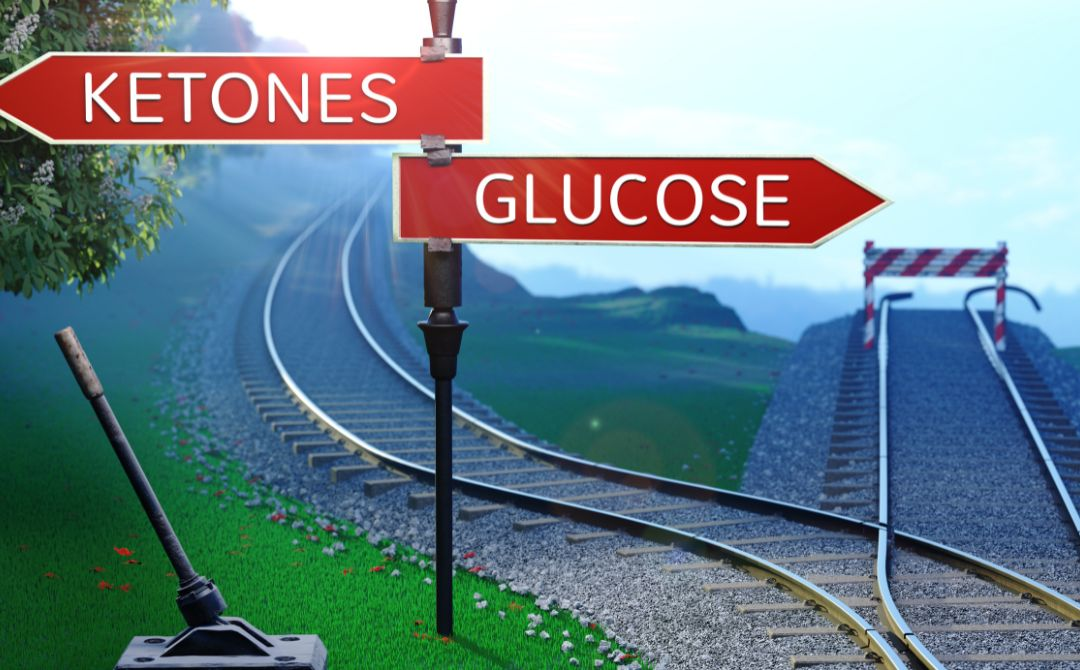
Exploring Ketone Production: Unraveling the Mysteries of Acetone and Its Unique Role in Ketosis
In the world of ketogenic diets, ketone production takes centre stage as a key aspect of how the body adapts to burning fat for fuel. This metabolic state, known as ketosis, occurs when carbohydrate intake is significantly reduced, leading to a shift in energy sources. During ketosis, the body produces ketones through the breakdown of stored fat, providing a valuable energy source for various bodily functions.
One of the ketones produced in this process is acetone, a fascinating compound with intriguing effects. Unlike other ketones, such as beta-hydroxybutyrate (BHB) and acetoacetate, which the body utilises for energy, acetone takes a different path. Rather than being used as fuel, acetone is excreted from the body through both breath and urine.
This unique excretion pathway gives rise to one of the telltale signs of ketosis - the distinctive fruity smell on the breath. Some ketogenic dieters may notice this phenomenon called "keto breath." The presence of acetone in the breath creates this distinct odour, which can be seen as a reassuring sign of being in ketosis and an occasional challenge for social interactions.
However, it is essential to understand that the energy loss resulting from acetone excretion is minimal in the grand scheme of things. The caloric loss from acetone is no more than approximately 100 calories per day, making it a negligible factor in the overall energy balance during ketosis.
As fascinating as acetone excretion may be, it is only one aspect of ketone production's complex and intricate process. The primary ketones utilised for energy - beta-hydroxybutyrate and acetoacetate - are crucial in fueling the brain, heart, and muscles. As the body continues to rely on fat for energy during ketosis, these ketones become essential in supporting the body's various functions.
Ketone production and ketosis, in general, offer numerous benefits beyond energy metabolism. Many people experience enhanced mental clarity and focus when in ketosis, attributing these cognitive benefits to the brain's efficient utilisation of ketones. Moreover, ketosis is often associated with improved insulin sensitivity and stabilised blood sugar levels, making it a promising approach for managing diabetes and certain metabolic disorders.
As you embark on your ketogenic journey, embrace the wonders of ketone production and appreciate the intricate dance of metabolic adaptations that lead to enhanced well-being and improved energy utilisation. Whether it's experiencing the benefits of ketosis or managing "keto breath," understanding the processes at play allows you to make the most of your ketogenic lifestyle while staying confident in the incredible capabilities of your body.
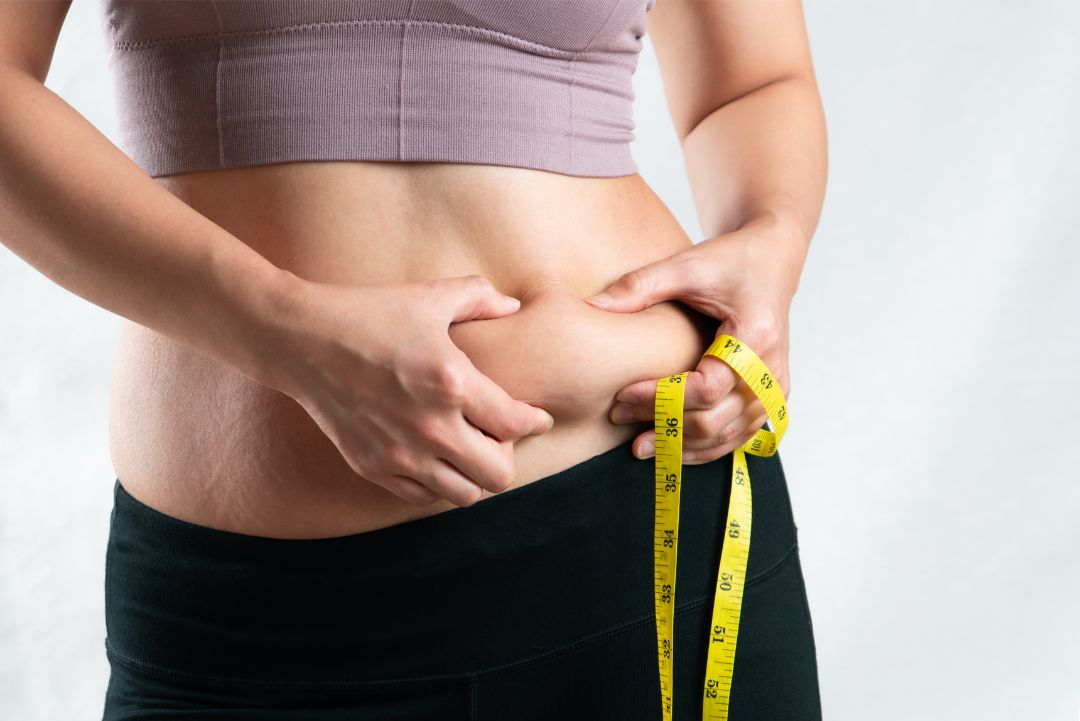
Understanding the Role of Ketones in Energy Metabolism and Tissue Function and the Impact on Fat Loss
Have you ever heard the claim that fat loss can happen through breathing and urination? It may sound intriguing, but let's delve deeper into this topic. While it's true that ketones, byproducts of a ketogenic diet, can be expelled through these channels, the impact on fat loss is minimal. The real hero behind shedding those stubborn pounds is the breakdown of stored fat fueled by the state of ketosis.
But what about the brain? Contrary to popular belief, the brain isn't solely dependent on glucose for fuel. Ketones are the brain's trusted ally, providing an alternative energy source. When glucose availability is limited, ketones can satisfy up to 75% of the brain's energy needs. They keep our mental gears turning and trigger a remarkable shift in our physiological tissues.
Imagine this: ketones act as a signal, coaxing our tissues to switch gears from glucose consumption to using fat as a primary fuel source. It's like giving our bodies the green light to tap into those fat reserves and transform them into energy. This metabolic transformation is a fundamental aspect of a ketogenic diet, unlocking the potential for weight loss and increased energy levels.
But the influence of ketones doesn't stop there. During food scarcity, they play a pivotal role in protein preservation. Sparing muscle breakdown ensures that our vital tissues remain intact, protecting our overall health and well-being.

Unlocking the Power of Ketones: Revolutionising Brain Fuel and Metabolism
Imagine a world where the brain can tap into an alternative fuel source, breaking free from its dependence on glucose and embracing the energy derived from fat. Welcome to the extraordinary realm of ketones, where metabolic magic happens. As the cornerstone of the ketogenic diet, ketones hold the key to a paradigm shift in brain function and overall metabolism.
Emerging research suggests that ketones act as mighty messengers, orchestrating a symphony of cellular activity that prompts various tissues throughout the body to transition from glucose utilisation to fat metabolism. It's as if they wave a flag, signalling to our physiological machinery that it's time to switch gears and tap into our fat stores for energy. This metabolic transformation unlocks the potential for weight loss and offers many health benefits.
But ketones' influence doesn't end there. They play a crucial role in safeguarding the precious glucose reserves, primarily in the liver. By reducing glucose production, ketones ensure that the brain, our most energy-demanding organ, has exclusive access to this vital fuel source. It's a survival mechanism to protect us during glucose scarcities, preserving our cognitive function and overall well-being.
However, ketones' remarkable impact extends far beyond brain fuel. They become the primary energy source for our entire body as it transitions into ketosis. This metabolic switcheroo redirects our internal machinery, shifting from the customary burning of glucose to efficiently using fat. The body becomes a well-oiled machine, conserving the limited glucose available for the brain's consumption while tapping into the abundant reserves of stored fat. It's a profound transformation that revolutionises our energy metabolism.
At first, the body's muscles eagerly embrace the influx of ketones, using them as a potent energy source. But as the duration of ketosis prolongs, these muscles gradually adapt and become more efficient at using other energy sources. Although still vital, ketones take a backseat as the body develops its outstanding ability to derive energy from various sources, ensuring a harmonious balance of fuel utilisation.

Importance of Macronutrient Composition
A ketogenic diet emphasises high dietary fat intake, moderate protein intake, and low carbohydrate intake to achieve and maintain ketosis. This macronutrient composition encourages the body to use fats as the primary fuel source. Choosing healthy fats, such as those found in olive oil and unsaturated fats, is essential while reducing saturated fat intake.
What's more, the keto diet restricts carb intake to a minimal level, allowing the body to enter a state of nutritional ketosis. This metabolic state promotes weight loss by encouraging the body to burn stored fat for energy.
One of the key benefits of the keto diet is its effectiveness in promoting weight loss. Reducing carb intake forces the body to tap into its fat reserves, leading to a gradual and steady decrease in body weight. Unlike low-fat diets that often leave you hungry and deprived, the keto diet allows you to enjoy satisfying meals while still achieving your weight loss goals.
Not only does the keto diet aid in weight loss, but it also offers various health benefits. Research suggests that following a ketogenic diet may help regulate blood sugar levels and improve insulin sensitivity, making it an excellent option for people with diabetes or those looking to manage their blood sugar. Moreover, studies have shown that the keto diet may contribute to lowering blood pressure, reducing the risk of heart disease.
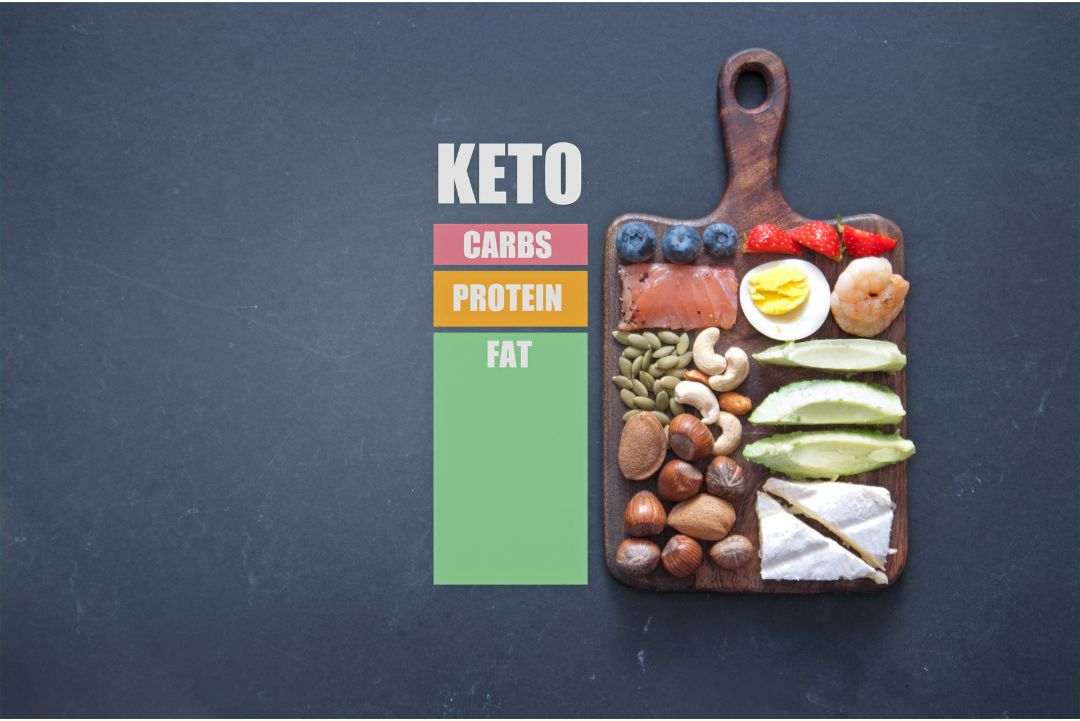
When following a keto diet, pay attention to the types of crucial foods you consume. While it's true that carbohydrates are restricted, it's important to choose nutrient-dense, low-carb foods that provide essential vitamins and minerals. Leafy greens, low-carb vegetables, nuts, and seeds are excellent choices as they offer fibre, essential nutrients, and healthy fats.
It's also essential to be mindful of your body's needs for protein. While the keto diet emphasises high fat intake, consuming enough protein-rich foods is necessary to support muscle maintenance and repair. However, excessive protein consumption should be avoided, as it can hinder the body's ability to enter and maintain ketosis.
As with any diet, listening to your body and making adjustments as needed is essential. Some people may experience initial side effects when transitioning into ketosis, commonly known as the keto flu. Symptoms such as fatigue, headaches, and irritability may occur but are temporary. Staying hydrated, replenishing electrolytes, and gradually reducing carb intake can help alleviate these symptoms.
While the keto diet promotes the consumption of fats and limits carbs, you should still partially eliminate carbohydrates from your meals. Incorporating low-carb fruits and starchy vegetables in moderation can provide necessary nutrients and add variety to your meals. It's all about finding the right balance to achieve and maintain ketosis effectively.
The keto diet offers an innovative approach to weight loss and improved health. By focusing on high fat, moderate protein, and low carbohydrate intake, the body is trained to burn fat as its primary energy source. Choosing healthy fats, consuming foods, and being mindful of protein intake is essential nutrient-dense. As with any diet, listening to your body, making adjustments as needed, and consulting a healthcare professional to ensure it aligns with your needs and goals is essential.

Addressing Misconceptions
Embracing the keto diet means bidding farewell to traditional high-carb meals and welcoming a low-carb, high-fat approach to eating. With its emphasis on healthy fats like olive oil and avocados, the keto diet provides a delicious and satisfying way to fuel your body while achieving weight loss and other health benefits. So, how does it all work?
When you follow a ketogenic diet, the key is to significantly reduce your carb intake while increasing your consumption of healthy fats. This strategic macronutrient composition encourages your body to enter a state of ketosis, turning to burn fat as its primary fuel source. The body adapts to this low-carb, high-fat lifestyle and becomes a fat-burning machine!
Ketosis, the magical process that occurs within your body on a keto diet, brings numerous benefits. Not only does it support rapid weight loss, but it also helps regulate blood sugar levels and reduce the risk of heart disease. Say goodbye to the highs and lows of blood sugar spikes and crashes! Plus, the keto diet may positively impact blood pressure, providing an extra boost to your cardiovascular health.
Now, what about all those rumours of the keto flu? Well, fear not! Some people may experience temporary symptoms such as fatigue or brain fog as their body transitions into ketosis. But fret not; these symptoms are usually short-lived and can be minimised by staying well-hydrated and ensuring adequate electrolyte intake.
It's important to note that the ketogenic diet is not a restrictive diet where you have to skimp on tasty meals. There are countless delicious and satisfying keto meals that will leave your taste buds dancing with joy. From savoury dishes like bacon-wrapped avocado to mouthwatering desserts like keto-friendly chocolate mousse, there's no shortage of culinary delights to explore on this journey.
When it comes to macros, moderation is key. While carbohydrates are kept to a minimum, consuming a moderate amount of protein is equally important to support muscle maintenance and repair. Don't worry; you won't be chomping down on endless steaks! Lean protein sources like poultry, fish, and tofu can easily fit into your keto meals.
As you delve further into the world of keto, you'll encounter different variations of the diet, such as the standard ketogenic diet, cyclical ketogenic diet, and targeted ketogenic diets. Each variation has its unique approach to carb intake and timing, allowing you to customise your keto experience to suit your goals and preferences.
Now, let's debunk a common misconception about the keto diet. Some worry that eating high fat will lead to weight gain or health issues. But fear not! The keto diet is about healthy fats, such as the heart-friendly unsaturated fats found in nuts, seeds, and fatty fish. You'll want to avoid unhealthy saturated fats and processed junk foods.
One fascinating aspect of the keto diet is how it affects your body composition. As you burn fat for fuel, you'll likely experience a reduced body fat percentage, leading to a lean and toned physique. Say hello to those beach-ready abs!
Of course, no diet is without its considerations. Suppose you have existing health conditions like kidney stones or high blood pressure. In that case, it's always wise to consult your healthcare provider before embarking on a targeted ketogenic diet or any dietary changes. They can provide personalised guidance to ensure your keto journey aligns with your needs and goals.
So, whether you're seeking rapid weight loss, blood sugar control, or a delicious way to enjoy healthy fats, the keto diet may be your ticket to success. Remember, it's all about finding the right balance, embracing healthy fats, and keeping those carb cravings at bay.
Insulin and Glucagon: The Key Players
As for regulating ketone body production, insulin and glucagon take centre stage. These two hormones act as primary controllers, orchestrating the delicate balance necessary for efficient ketogenesis. In particular, the interplay between decreased insulin levels and increased glucagon levels triggers the process of ketone body formation. Numerous studies have been conducted to unravel the intricate components of ketogenesis, resulting in the formulation of a model that involves the liver and fat cells. Additionally, the enzyme mitochondrial HMG CO reductase (MHS) has been proposed as a third site of control, further adding to the complexity of the process.
The Role of Insulin and Catecholamines in Fat Breakdown
Insulin and catecholamines are crucial in determining how fat is broken down within adipose tissue. When insulin levels are high, the lipoprotein lipase (LPL) enzyme inhibits the mobilisation of free fatty acids (FFA) and promotes fat storage. On the other hand, when insulin levels drop due to the absence of insulin or the presence of lipolytic hormones such as catecholamines, FFA mobilisation is initiated. Growth hormones, glucagon, and cortisol also contribute to this process, albeit to a lesser extent. Insulin exerts a significant anti-lipolytic effect, overriding the influence of elevated catecholamines, even if present simultaneously. However, it is worth noting that high levels of both insulin and catecholamines rarely co-occur in the body, as factors that increase catecholamine levels, such as exercise, tend to decrease insulin levels and vice versa.
The Fat Cell: An Integral Player in Ketone Body Formation and Ketosis Regulation
As we delve deeper into the intricacies of the ketogenic process, it becomes evident that the fat cell plays a vital role as a regulatory point for ketone body production. Ketosis heavily relies on the availability of Free Fatty Acids (FFAs), which are the building blocks of fat molecules. Understanding the significance of FFAs in ketone synthesis and how the fat cell influences this process is crucial to unlocking the full potential of ketosis.
The journey towards ketosis begins with the breakdown of stored fat within the adipose tissue, also known as the fat cell. These stored fats are released in the form of FFAs and transported through the bloodstream to the liver. Once in the liver, FFAs undergo a series of intricate biochemical reactions, eventually forming ketone bodies. These magical molecules serve as an alternative fuel source for the body, particularly the brain, heart, and muscles.
The fat cell, therefore, acts as a critical gateway in the ketone body formation process. Insufficient levels of FFAs can directly impact the liver's ability to generate ketones, potentially hindering the progression of ketosis. This emphasises the importance of ensuring adequate fat intake on the keto diet to enable efficient mobilisation and transport of FFAs from the fat cells to the liver.
Interestingly, the state of the fat cell can be influenced by various factors, including dietary choices, activity levels, and hormonal regulation. In a ketogenic diet, the reduced intake of carbohydrates prompts the body to rely on fat stores for energy, thereby increasing the availability of FFAs for ketone synthesis. Regular physical activity and exercise can also stimulate the release of FFAs from fat cells, further contributing to the pool of building blocks required for ketone production.
Moreover, hormones play a significant role in regulating the fat cell's behaviour and the release of FFAs. Insulin, for instance, inhibits the breakdown of stored fat, whereas glucagon and certain stress hormones promote the release of FFAs from the fat cell. In a ketogenic state, insulin levels typically decrease, allowing for increased fat mobilisation and FFA availability for ketone synthesis.
In summary, the fat cell is a critical regulatory point for ketone body formation, with FFAs as the key players in this intricate process. Adequate levels of FFAs are essential for the liver's ability to generate ketones, and any deficiency in FFAs can hinder the development of ketosis, regardless of the liver's readiness for ketone synthesis. Understanding the interplay between fat cell activity, FFA release, and hormonal regulation is pivotal in achieving and maintaining a state of ketosis.
As you embark on your ketogenic journey, embrace the significance of the fat cell and its role in shaping the metabolic landscape of ketosis. By prioritising a well-formulated ketogenic diet, incorporating regular physical activity, and being mindful of hormonal factors, you can optimise the production of ketone bodies and unlock the full potential of this energy-efficient metabolic state. Remember, the fat cell is not just a storage site but a dynamic player in your journey towards improved energy utilisation and overall well-being.
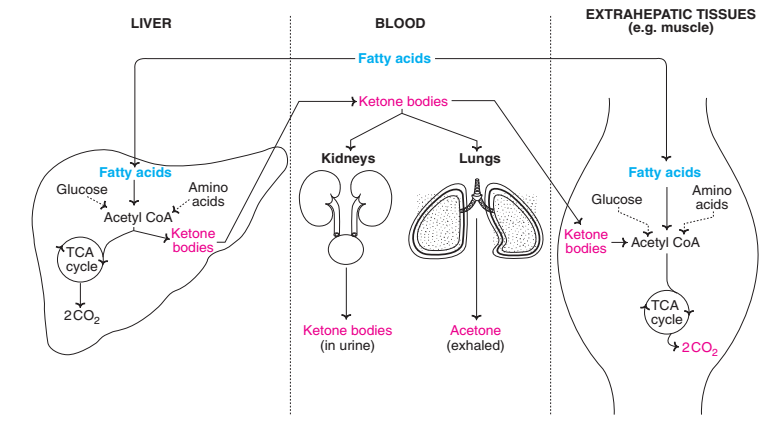
Unveiling the Complexity of Ketogenesis: Fueling the Power of Ketone Bodies
Exploring the intricate mechanisms of ketogenesis reveals the remarkable complexity underlying the production of ketone bodies. The coordinated interplay between insulin and glucagon, the involvement of enzymes like MHS, and the influence of various hormones shape the metabolic landscape that drives the ketogenic process. By gaining a deeper understanding of these intricate processes, we develop a greater appreciation for the potency of ketone bodies and their pivotal role in the ketogenic diet.
Ketones, the byproduct of fatty acid metabolism, are not foreign or aberrant substances within our bodies. Instead, the liver continuously produces them in small quantities, naturally circulating in the bloodstream. However, their concentrations are typically low following a regular diet, and their physiological impact remains minimal. Only when adhering to a ketogenic diet, characterised by restricted carbohydrate intake, does ketone production and blood concentrations significantly increase. Hence, it is crucial to recognise that ketones should not be misconstrued as toxins but rather as fundamental and integral components of human physiology.
The Role of the Liver in Ketogenesis
The liver plays a crucial role in ketogenesis, the process of generating ketones. Without the liver operating in a ketogenic mode, ketone bodies will not be produced, even if high levels of free fatty acids (FFAs) are available. The amount of liver glycogen, the storage form of glucose in the liver, is critical in determining whether ketone bodies will be synthesised. The primary function of liver glycogen is to maintain normal blood glucose levels.
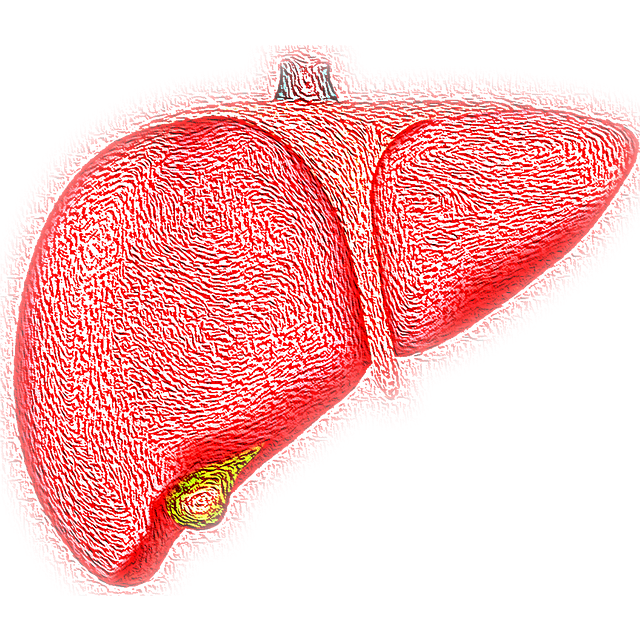
Understanding the Importance of Ketones in Human Physiology
Understanding the intricacies of ketogenesis and the role of insulin, glucagon, and liver glycogen is vital in comprehending the process of ketosis. Ketones, far from being abnormal or harmful, are essential molecules with numerous significant functions within the human body. They serve as an alternative energy source for various tissues, contribute to weight management and body fat reduction, and may positively affect blood pressure, blood sugar control, and LDL cholesterol levels. Additionally, the ketogenic diet has potential benefits for cardiovascular disease, fatty liver disease, and metabolic conditions.
Unleashing the Power of Ketones: A Journey into Ketogenesis
When it comes to the fascinating world of ketogenesis, the liver takes centre stage as it churns out an impressive amount of ketones daily - anywhere between 115 and 180 grams. Surprisingly, the liver reaches its peak ketone production on the third day of carbohydrate restriction. The speed at which ketone bodies are synthesised is heavily influenced by the rate of incoming free fatty acids (FFAs) once the liver sets its ketone-generating machinery in motion. This intriguing aspect of ketogenesis also impacts how physical activity affects ketosis levels.
To embark on the journey of ketone production, the liver must bid farewell to its glycogen reserves. As liver glycogen levels deplete, a remarkable shift occurs. An enzyme called carnitine palmityl transferase I (CPT-1) becomes active, driven by the drop in malonyl-CoA levels. CPT-1's role is to transport free fatty acids into the mitochondria for burning. This activation of CPT-1 is triggered by a decline in blood glucose levels, which leads to a decrease in the insulin/glucagon ratio. As a result, free fatty acids are mobilised from fat cells and serve as a substrate for the liver to produce ketone bodies.
Now, let's dive into a technical note on the relationship between malonyl-CoA and CPT-1. Malonyl-CoA, a compound involved in fat synthesis, plays a critical role in controlling ketogenesis in the liver, even more so than glycogen. When liver glycogen levels are abundant, malonyl-CoA is produced in large quantities. Fat synthesis (lipogenesis) and fat breakdown (lipolysis) are elevated in this state. However, malonyl-CoA concentration ultimately determines whether the liver begins ketone production. This happens because malonyl-CoA inhibits the enzyme CPT-1 in the liver and other tissues, including muscle. It is CPT-1 that facilitates the transport of free fatty acids into the mitochondria for oxidation. As malonyl-CoA levels decrease, CPT-1 becomes active, and the oxidation of FFAs accelerates, leading to an increase in acetyl-CoA levels.
Acetyl-CoA, the show's star, is essential to energy production. Acetyl-CoA enters the Krebs cycle when glucose is available, boosting energy production. However, without accessible glucose, acetyl-CoA accumulates in the liver. As malonyl-CoA levels decline and CPT-1 springs into action, the oxidation of free fatty acids progresses rapidly, resulting in elevated levels of acetyl-CoA. The surplus acetyl-CoA is then condensed into acetoacetic acid, which can be further converted into beta-hydroxybutyrate and acetone—the three primary ketone bodies.
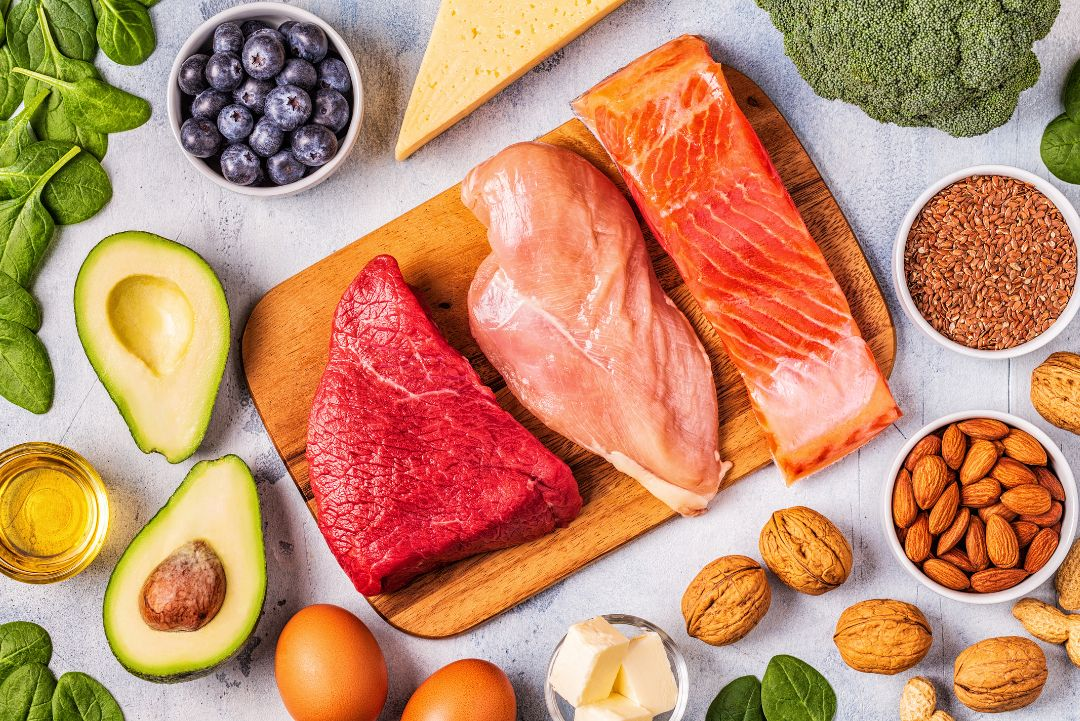
Distinguishing the States of Ketosis: Understanding the Unique Characteristics
Ketosis, a metabolic state where the body predominantly uses ketone bodies for energy, can manifest under various circumstances, each with its distinct characteristics. Recognising these different states is essential to appreciate their implications for our health and well-being fully. Let's delve into the diverse forms of ketosis and learn how to differentiate them from potentially dangerous metabolic conditions such as diabetic and alcoholic ketoacidosis.
-
Starvation Ketosis: Starvation ketosis occurs during periods of prolonged fasting when the body's carbohydrate reserves are depleted, leading to a scarcity of glucose for energy. In response, the body starts breaking down stored fat into ketone bodies to provide an alternative fuel source. This type of ketosis is a natural survival mechanism that helps us endure extended periods without food. However, it's crucial to remember that long-term fasting should be approached cautiously and under medical supervision.
-
Nutritional Ketosis: Nutritional ketosis is achieved through a well-formulated, high-fat, low-carbohydrate ketogenic diet. By significantly reducing carbohydrate intake and increasing healthy fats, the body enters a state of ketosis, relying primarily on ketone bodies for energy. Nutritional ketosis is a controlled and sustainable approach that supports various health benefits, such as weight loss, improved mental clarity, and stabilised blood sugar levels.
-
Post-Exercise Ketosis: Following intense physical activity, the body may experience post-exercise ketosis due to the depletion of muscle glycogen stores. During prolonged or high-intensity workouts, the body taps into glycogen reserves for fuel. Once these stores are depleted, ketosis may briefly occur until carbohydrate levels are replenished through dietary intake. Post-exercise ketosis is a natural response to the demands of physical activity and is not a cause for concern.
While the states of ketosis mentioned above have advantages and are generally safe, it's essential to differentiate them from potentially life-threatening conditions such as diabetic and alcoholic ketoacidosis.
-
Diabetic Ketoacidosis (DKA): DKA is a severe complication primarily associated with uncontrolled type 1 diabetes. Insulin levels are extremely low or absent in this condition, causing blood glucose levels to soar. In response, the body breaks down fat at an accelerated rate, leading to an excessive buildup of ketone bodies in the blood. This results in dangerously high blood acidity, which can be life-threatening if not promptly treated with insulin and medical intervention.
-
Alcoholic Ketoacidosis (AKA): AKA is a condition that arises in individuals with a history of heavy alcohol consumption. When alcohol is metabolised in the liver, it interferes with normal carbohydrate metabolism, leading to low blood sugar levels. As a result, the body resorts to fat breakdown, generating excessive ketone bodies and causing blood acidity to rise. AKA requires immediate medical attention and treatment to correct the metabolic imbalance.
The key factor in distinguishing these states lies in the levels of ketone concentrations detected in the blood. In the states of ketosis mentioned earlier (starvation ketosis, nutritional ketosis, and post-exercise ketosis), ketone levels remain within safe and controlled ranges. However, in diabetic and alcoholic ketoacidosis, ketone levels surge to dangerous levels, leading to metabolic disturbances and life-threatening consequences.
Understanding Ketone Concentrations
Under normal circumstances, ketone bodies are in minimal amounts in the bloodstream, approximately 0.1 mmol/dl. As the liver ramps up its ketone body production, its levels rise. Clinically, ketosis is defined as a ketone level above 0.2 mmol/dl. Additionally, mild ketosis of around 2 mmol/dl can be observed after aerobic exercise. On the other hand, ketoacidosis is characterised by ketone concentrations exceeding 7 mmol/dl, with diabetic and alcoholic ketoacidosis reaching levels as high as 25 mmol/dl. It's important to note that individuals without diabetes or alcoholism will never experience such extreme ketosis.
Measurements and Classifications
To measure the metabolic state of ketosis, two classifications come into play. Ketonemia is the accumulation of ketone bodies in the blood and is the definitive sign that ketosis has been initiated. However, determining the level of ketonemia in ketogenic dieters usually requires a blood test. Ketonuria, the excretion of ketone bodies in the urine resulting from their accumulation in the kidneys, constitutes the second subdivision. Around 10% to 20% of the liver's total ketone production may be excreted in the urine, amounting to only 10-20 grams per day, equivalent to 45-90 calories. Ketostix (tm), small paper strips that react with urinary ketones and change colour, can indirectly measure ketonuria, offering insights into ketonemia.

Fluctuations and Individual Variations
Ketone levels exhibit fluctuations throughout the day, with lower levels in the morning and peaking around midnight. Hormonal changes during the day may contribute to these variations. Children tend to enter more profound ketosis than adults, while women often display higher ketone levels than men. It's worth noting that certain supplements, including the popular antioxidant N-acetyl-cysteine, may mislead individuals into believing they are in a state of ketosis.
Understanding ketosis's multifaceted nature and its various states and measurements empowers individuals to navigate their dietary and metabolic journeys.
Differentiating Diabetic Ketoacidosis (DKA) and Dietary Ketosis
Diabetic ketoacidosis (DKA) and dietary ketosis are often mistakenly conflated. However, they are distinct conditions. DKA only occurs in individuals with Type I diabetes, characterised by a malfunctioning pancreas that hampers insulin production. People with Type I diabetes require insulin injections to maintain normal blood sugar levels. When individuals with diabetes are without insulin for an extended period, a condition resembling dietary ketosis but with essential differences arises. While non-diabetic individuals enter ketosis with low blood glucose levels (below 80 mg/dl), Type I diabetics can enter ketosis with extremely high blood glucose levels (exceeding 300 mg/dl). Although dietary ketosis and DKA share a low insulin/glucagon ratio, Type I diabetics tend to produce more ketone bodies due to the complete absence of insulin.
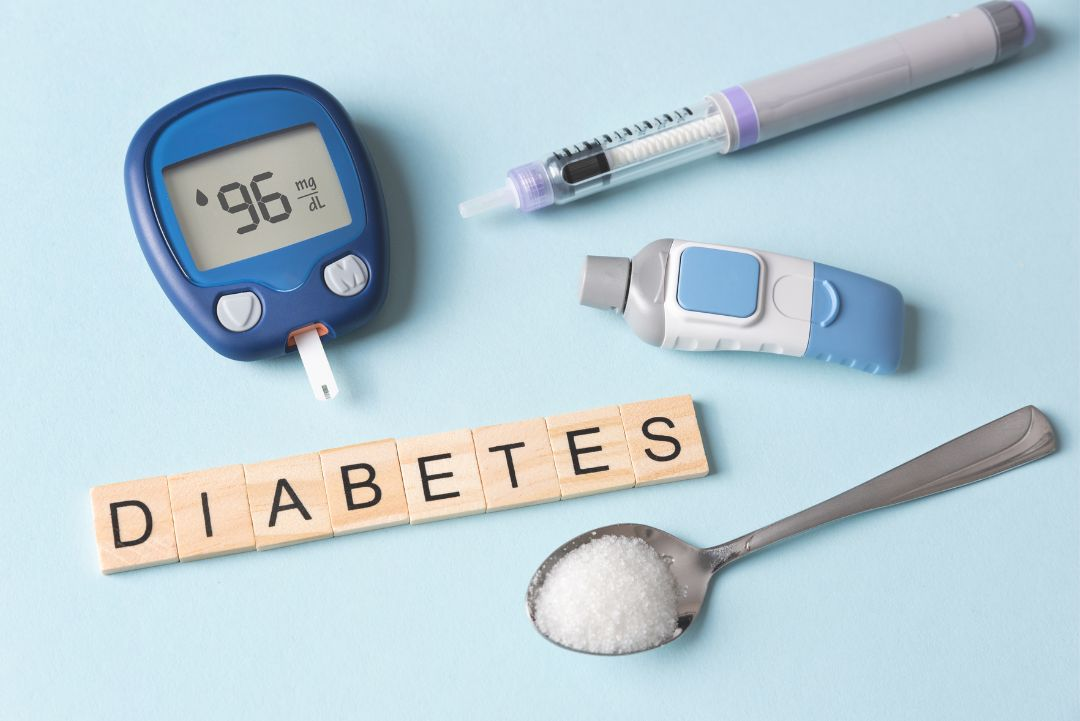
Feedback Loops and Ketone Regulation
In nondiabetic individuals, feedback loops prevent runaway ketoacidosis. When ketone levels in the blood reach high levels (around 4-6 mmol), ketones trigger insulin release. This rise in insulin has three primary effects: it slows the release of free fatty acids (FFA) from fat cells, decreases the rate of ketone body synthesis in the liver by increasing the insulin/glucagon ratio, and increases ketone excretion in the urine. These effects collectively reduce ketone levels in the blood. In contrast, Type I diabetes lacks these feedback loops, leading to uncontrolled ketone production.
Treatment and Alcoholic Ketoacidosis
DKA requires insulin injections as a therapeutic treatment to halt the synthesis of ketone bodies, inhibit FFA release, and remove ketone bodies from the bloodstream. Rehydration and electrolyte supplementation are also crucial to manage DKA symptoms. Non-diabetic individuals have feedback loops that prevent metabolic ketosis from progressing to dangerous DKA levels. Alcoholic ketoacidosis, often mistaken for dietary ketosis, is a clinical condition in individuals who have fasted and consumed significant amounts of alcohol. Ethanol affects the liver's ketone body production, leading to a ketotic state similar to DKA. Unlike DKA, alcoholic ketoacidosis can be quickly resolved by consuming carbohydrates, which raise insulin levels and prevent ketone body generation.
So, what are you waiting for? Embrace the joy of keto and take that leap towards a healthier, happier you. Today is the day to embark on an adventure filled with delicious food, boundless energy, and a community of keto enthusiasts cheering you on. Embrace the magic of ketosis, and let the fun-filled transformation begin! Keto is not just a diet; it's a path to a vibrant and confident life, and you deserve to experience it now. Join the keto revolution and let the journey to a healthier you unfold in all its delicious glory!

